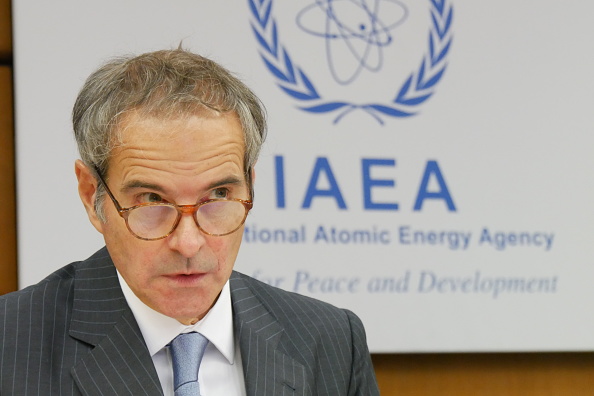Politics
Iran Undertakes Rapid Clean-Up of Nuclear Site Following Attacks

Reports indicate that Iran is engaged in a significant clean-up operation at the Mojdeh site, aimed at removing structures potentially linked to its nuclear weapons research. According to the Institute for Science and International Security, satellite imagery reveals extensive demolition efforts in the wake of Israeli airstrikes on June 18, 2023. The institute, led by former UN nuclear inspector David Albright, suggests that this activity may be intended to eliminate evidence of any illicit nuclear development.
The Iranian government consistently asserts that its nuclear program is solely for peaceful purposes. The clean-up at Mojdeh occurs as the International Atomic Energy Agency (IAEA) engages in discussions in Tehran regarding the resumption of inspections that were disrupted amid recent military escalations, including the June 13-24 conflict between Israel and Iran and subsequent US strikes on Iranian nuclear facilities.
Context of the Clean-Up and International Response
In response to Iran’s alleged violations of the 2015 nuclear deal, which aims to prevent the development of nuclear weapons, nations including Britain, France, and Germany are reportedly initiating the process of re-imposing UN sanctions on Iran. This action is based on information provided by four diplomats familiar with the situation.
During a press briefing on July 3, Rafael Grossi, the head of the IAEA, emphasized that Iran is legally required to allow inspections to resume promptly. He expressed the agency’s intention to visit all relevant sites, including major facilities such as Fordow, Natanz, and Isfahan. The IAEA is particularly focused on verifying Iran’s stockpile of over 400 kg (approximately 882 pounds) of uranium enriched to near weapons-grade purity.
The Mojdeh site, also known as Lavisan II, is situated near Malek Ashtar University. It has been linked to the AMAD Plan, a past nuclear weapons development initiative that both the IAEA and US intelligence agencies have determined concluded in 2003. The first Israeli strike on Mojdeh destroyed several buildings, including those associated with the Institute of Applied Physics and another linked to the Shahid Karimi Group, which has faced US sanctions due to its involvement in missile and explosive-related projects.
Details of the Israeli Strikes and Aftermath
Satellite images from Maxar Technologies confirm that the second Israeli strike on Mojdeh resulted in the destruction of the Institute of Applied Physics and damage to a security building. Following these attacks, imagery from July 3 showed the commencement of clean-up activities, while subsequent images from August 19 revealed that the Applied Physics building and associated workshop had been completely demolished and cleared of debris.
The swift actions taken by Iran to dismantle key structures at the Mojdeh site appear to be an effort to sanitize the area and obstruct potential future inspections from uncovering evidence of nuclear weapons-related activities. This development raises significant concerns about transparency and adherence to international nuclear agreements.
As discussions continue regarding the future of Iran’s nuclear program, the international community remains watchful of Tehran’s actions and the implications they may have on regional and global security.
-

 World4 months ago
World4 months agoTest Your Knowledge: Take the Herald’s Afternoon Quiz Today
-

 Sports4 months ago
Sports4 months agoPM Faces Backlash from Fans During Netball Trophy Ceremony
-

 Lifestyle4 months ago
Lifestyle4 months agoDunedin Designers Win Top Award at Hokonui Fashion Event
-

 Entertainment5 months ago
Entertainment5 months agoExperience the Excitement of ‘Chief of War’ in Oʻahu
-

 Sports4 months ago
Sports4 months agoLiam Lawson Launches New Era for Racing Bulls with Strong Start
-

 World5 months ago
World5 months agoCoalition Forms to Preserve Māori Wards in Hawke’s Bay
-

 Health4 months ago
Health4 months agoWalking Faster Offers Major Health Benefits for Older Adults
-

 Lifestyle4 months ago
Lifestyle4 months agoDisney Fan Reveals Dress Code Tips for Park Visitors
-

 Politics4 months ago
Politics4 months agoScots Rally with Humor and Music to Protest Trump’s Visit
-

 Top Stories5 months ago
Top Stories5 months agoUK and India Finalize Trade Deal to Boost Economic Ties
-

 Health2 months ago
Health2 months agoRadio Host Jay-Jay Feeney’s Partner Secures Visa to Stay in NZ
-

 World5 months ago
World5 months agoHuntly Begins Water Pipe Flushing to Resolve Brown Water Issue









